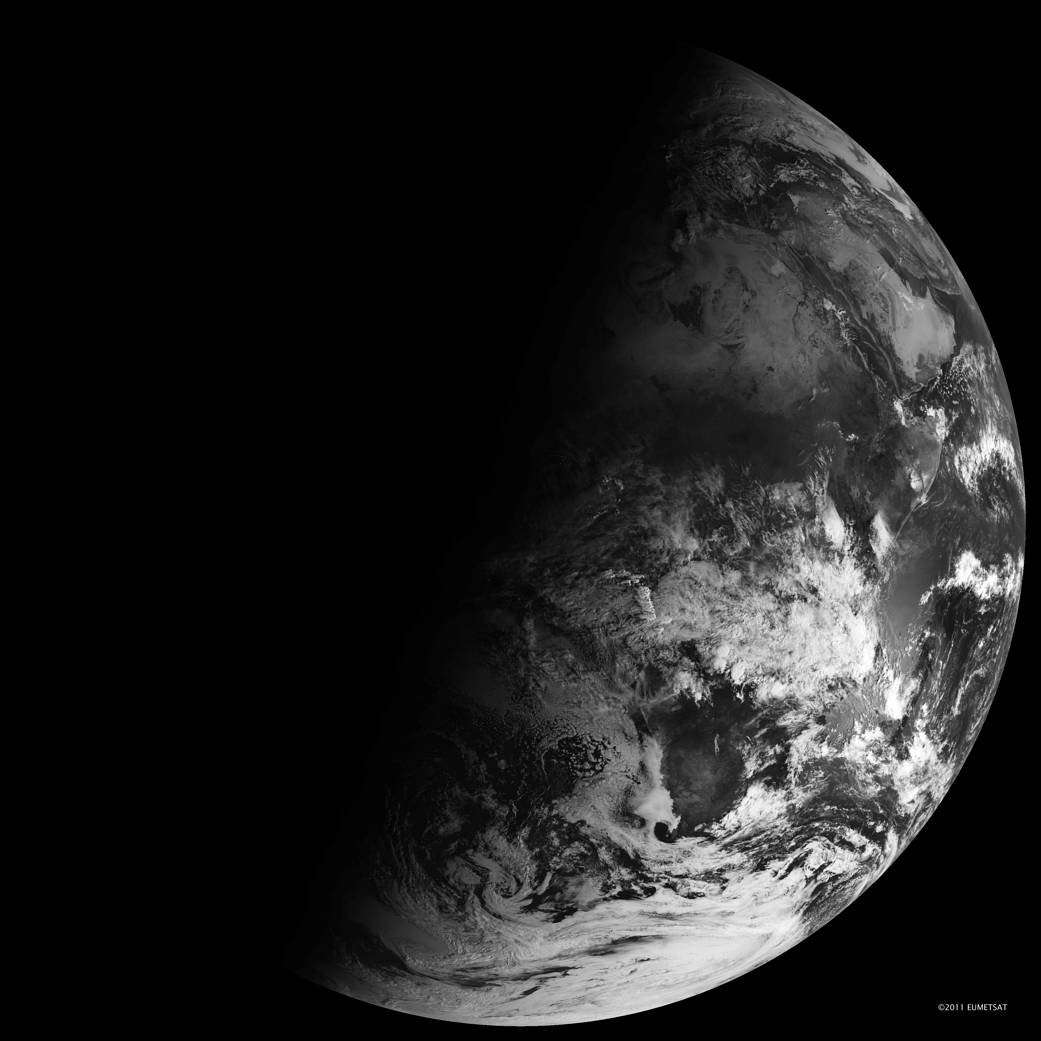The Earth’s solstices come twice a year. For the Northern Hemisphere, the summer (June) solstice occurs around June 20-21, and the winter (December) solstice happens around Dec. 21-22.
地球的至日一年有两次。对于北半球来说,夏至发生在6月20-21日左右,冬至发生在12月21-22日左右。
At the solstice, the Sun’s path appears farthest north or south, depending on which half of the planet you are on. Seasons change on Earth because the planet is slightly tilted on its axis as it travels around the Sun.
在冬至时,太阳的路径出现在最远的北方或南方,这取决于您所在的行星的哪一半。地球上的季节会发生变化,因为地球在绕太阳运行时其轴心略微倾斜。
Earth’s axis may be imagined as an imaginary pole going right through the center of our planet from “top” to “bottom.” Earth spins around this pole, making one complete turn each day. That is why we have day and night.
地轴可以想象成一个从“上”到“下”穿过地球中心的假想极点。地球围绕着这个极点自转,每天转一圈。这就是为什么我们有白天和黑夜。
This image was taken with the Spinning Enhanced Visible and Infrared Imager (SEVIRI) on EUMETSAT’s Meteosat-9 captured this view of Earth from geosynchronous orbit, and shows how sunlight fell on the Earth on Dec. 21, 2010.
这张照片是由欧洲气象卫星组织(EUMETSAT)的Meteosat-9上的旋转增强可见光和红外成像仪(SEVIRI)拍摄的,它从地球同步轨道拍摄了这张地球照片,并显示了2010年12月21日阳光是如何照射到地球上的。
Image Credit: NASA
影像来源:NASA



